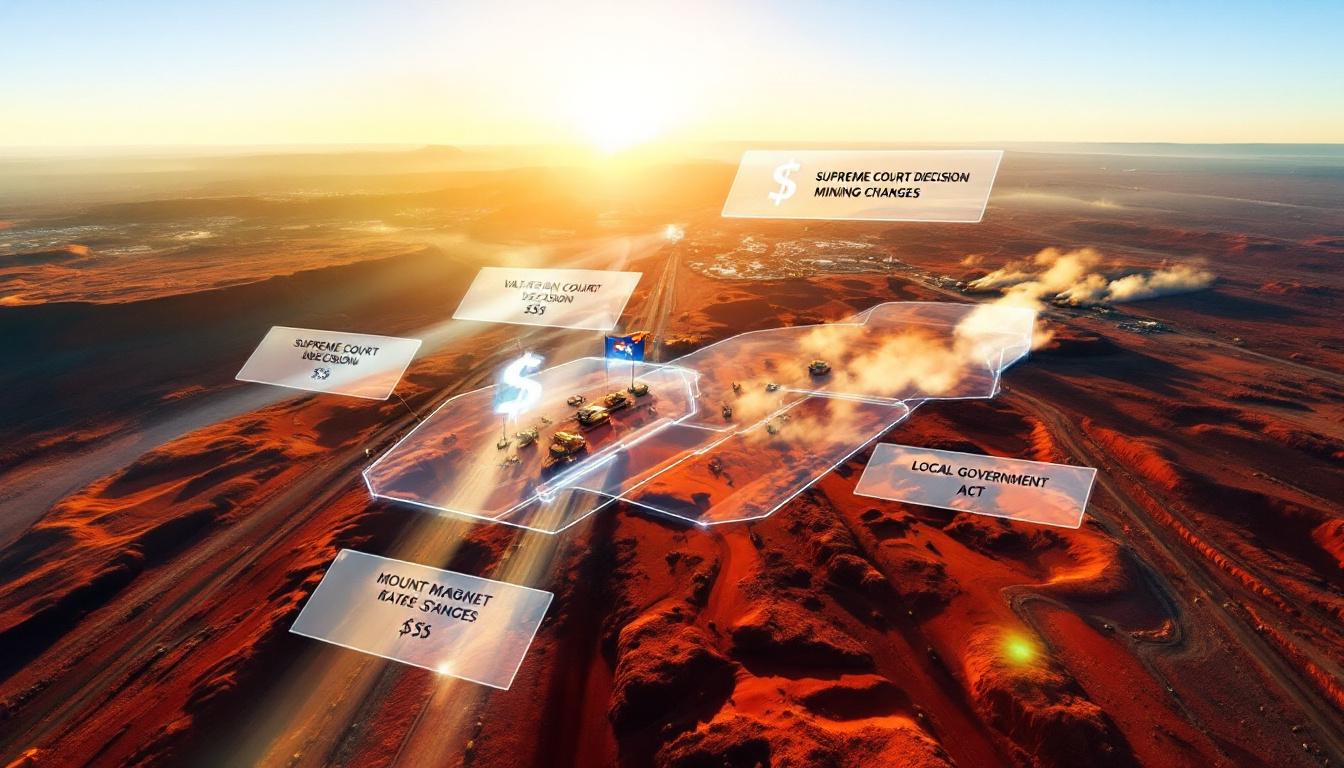The McDermitt Lithium Project stands as a monumental resource in America's critical minerals landscape. This article explores the project’s value, economic metrics, and technological advantages while discussing how it fits into the broader strategy for Jindalee Lithium McDermitt project critical minerals. Its scale and potential make it a key asset in ensuring secure domestic supplies.
Comparisons with Other US Lithium Resources
The McDermitt Lithium Project holds a confirmed resource of 21.5 million tonnes of lithium carbonate equivalent (LCE). Its position along the Oregon-Nevada border within the McDermitt Caldera has cemented its place as the largest lithium deposit in the United States.
Its proximity to Lithium Americas' Thacker Pass Project—located just 30km away—is particularly intriguing. This closeness brings a natural opportunity for revolutionizing lithium production insights into broad-scale domestic capabilities.
Thacker Pass has already attracted substantial investment, including US$945 million from General Motors and a US$2.3 billion loan from the Department of Energy. These figures underscore the robust potential of other projects in the region. Therefore, McDermitt stands ready to benefit from similar financial backing.
The geologic formation of McDermitt consists of lithium-bearing sedimentary clays with a consistent grade distribution. This reliable character is advantageous compared to lithium resources with fluctuating concentrations. The flat-lying sediments also contribute to low mining costs.
Perhaps most importantly, only about 15% of the current lithium resource has been factored into the Pre-Feasibility Study (PFS) production schedule. The remaining 85% signals significant untapped potential with prospects for extended mine life or increased production rates.
Economic Metrics from the Pre-Feasibility Study
The Pre-Feasibility Study reveals compelling financial indicators that position McDermitt amongst the most attractive lithium developments in North America. With a post-tax Net Present Value (NPV) of US$3.23 billion at an 8% discount rate, the intrinsic value is clear.
An Internal Rate of Return (IRR) of 17.9% further highlights robust profitability, and a payback period of less than five years significantly derisks the investment. Beyond cashflow considerations, the project’s extraordinary lifespan of 63 years provides operational certainty rarely seen in the mining sector.
In the initial 10 years, production capacity starts at 47,500 tonnes per annum (tpa). Over the first 40 years, an average of 44,300 tpa will yield approximately 1.8 million tonnes of battery-grade lithium carbonate. This output could supply millions of electric vehicles.
High EBITDA margins, estimated at 66% in early operations, reflect well on overall operational efficiency. With a total projected cost of US$3.02 billion, which includes a 21% contingency, the project is competitive even under conservative modelling.
Investors are also reassured by ongoing efforts bolstering north american ev battery supply chains in the region.
Mining and Processing Advantages
The McDermitt project benefits from intrinsic advantages in mining and processing, which are pivotal for its long-term success. The sedimentary nature of the deposit offers a low-cost mining environment, avoiding the complexities associated with hard-rock extraction.
Soft, near-surface, free-digging sediments mean the project does away with the need for expensive underground mining techniques. With a strip ratio of merely 1.3, McDermitt enjoys lower waste removal costs compared to hard-rock mines that often have strip ratios exceeding 3:1.
The deposit’s material quality supports high recovery rates, with metallurgical recoveries of 84.4% expected over 40 years. Such efficiency is made even more certain following the successful production of battery-grade lithium carbonate in July 2024.
The processing flowsheet, recommended by engineering firm Fluor, employs established techniques like beneficiation and acid leaching. Combining these methods with advanced lithium ore processing technology creates confidence in scaling the operation effectively.
Governmental Support and Strategic Partnerships
The US Government has played a pivotal role in supporting the McDermitt project. A Strategic Cooperative Research and Development Agreement (CRADA) with the Department of Energy’s Ames National Laboratory underlines the significance attached to domestic critical minerals.
This collaboration is focused on optimising lithium extraction and processing, thereby enhancing the overall feasibility of the project. Direct funding from the Department of Energy aims to reduce operational costs while improving environmental sustainability.
Additionally, project developers have initiated an application for a Department of Defense grant to co-finance key feasibility study phases. Secure financial incentives, including tax credits under the Inflation Reduction Act, reinforce the project’s value proposition.
Such support avenues are further bolstered by initiatives in mining’s crucial role in the clean energy transition, which are essential as domestic processing and production gain priority.
Market Factors and Future Growth Prospects
Rising demand for lithium, driven by the clean energy transition, creates an exceptionally favourable market environment for McDermitt. Domestic lithium consumption is projected to rise over 4,000% by 2050 due to increasing electric vehicle manufacturing and grid-scale energy storage.
Major automotive manufacturers are investing billions to secure reliable, US-based supply chains. With its substantial lithium resource and favourable location, McDermitt is well-positioned for long-term partnerships in this evolving market.
Additional market advantages include preferential federal procurement policies that bolster domestic suppliers. McDermitt's geographic proximity to several planned gigafactories helps reduce transportation costs and improves logistical efficiency.
These dynamics support not only immediate production targets but also long-term supply agreements, which are critical in an era of intensifying competition in global lithium markets.
Current global trends also point to rising concerns over fluctuating lithium prices and critical policy shifts. In this context, the project’s resilience is further echoed by its ability in navigating lithium market price drops and policy challenges. Advancements in extraction techniques and sustained investor interest will ensure that McDermitt remains a strategic asset for years to come.
Leadership Driving the Project Forward
The success of the McDermitt Lithium Project is underpinned by a seasoned leadership team and extensive experience in mining and finance. CEO Ian Rodger, with 15 years at industry giants like Rio Tinto and Oz Minerals, is guiding the project with a clear vision for its role in America’s critical minerals sector.
Executive Director Lindsay Dudfield contributes over 40 years of expertise in exploration, offering deep insights into resource expansion and geological consistency. Non-Executive Chair Wayne Zekulich also adds valuable financial structuring expertise.
Vice President Brett Marsh, a certified professional geologist in the United States, is responsible for on-ground operations and regulatory engagement. This diverse team’s collective experience reassures stakeholders that the Jindalee Lithium McDermitt project critical minerals are in capable hands. An external perspective on project leadership can be viewed on jindalee lithium's corporate story.
Opportunities for Enhanced Value Creation
Project developers have identified several pathways to unlock further value. Firstly, ongoing process optimisation could reduce both reagent consumption and energy requirements. This reduction would lower operational costs across the project’s lifespan.
Secondly, the potential recovery of by-products such as rubidium and cesium offers additional revenue streams with minimal incremental investment. With only about 11% of the resource currently defined as ore reserve, there is a vast potential for resource and production expansion.
Cost metrics already place McDermitt in the competitive lower half of the industry cost curve. Even during periods of low lithium spot prices, pre-tax net operating cashflow margins stand at a robust 17%.
Moreover, technological advancements such as direct lithium extraction (DLE) are being explored to further reduce capital intensity while enhancing environmental performance. Such innovations could be instrumental in keeping the project at the forefront of US critical minerals development.
- Key advantages include:
- Low strip ratios yielding reduced waste removal.
- Consistent geological distribution that favours efficient processing.
- Robust governmental support that underwrites financial risk.
- Strategic location coupled with strong market demand.
- Opportunities for extracting valuable by-products with minimal incremental costs.
FAQs: McDermitt Lithium Project
What is the size of the lithum project?
The project spans 54.6 square kilometres along the Oregon-Nevada border, securing one of North America’s largest lithium resources. Its scale provides significant operational flexibility and scope for future expansion.
How does the project benefit from its geology?
The sedimentary clays present a consistent grade with near-surface exposure. This enables low-cost, large-scale mining operations and simplified processing compared to hard-rock deposits, supporting environmentally friendly extraction methods.
What is the current mineral resource estimate?
The 2023 estimate confirms a combined resource of 3 billion tonnes at 1,340 ppm lithium. This equates to 21.5 million tonnes of LCE, sufficient to supply a vast segment of America’s future lithium needs.
How does the McDermitt Project fit into the US critical minerals strategy?
As a pivotal asset, it underpins America’s drive to secure domestic sources of critical minerals. This focus is essential for ensuring sustainable supply chains, reducing reliance on foreign sources, and strengthening national security.
Emerging external initiatives also highlight cutting-edge practices within US mining. For instance, insights into recent mining strategies are available in discussions about us mining partnerships.
The McDermitt Lithium Project remains one of the most promising ventures in the realm of Jindalee Lithium McDermitt project critical minerals. With strong leadership, innovative processing techniques, and a supportive governmental framework, it is well-positioned to lead the way as domestic supply chains are strengthened for the clean energy transition.
Ready to Capture Early Returns on the Next Major Mineral Discovery?
Discovery Alert's proprietary Discovery IQ model instantly identifies significant ASX mineral discoveries like those that delivered exceptional returns for De Grey Mining and WA1 Resources investors, turning complex geological data into actionable opportunities. Explore our dedicated discoveries page to see how early detection of major mineral finds can generate substantial returns for prepared investors.




